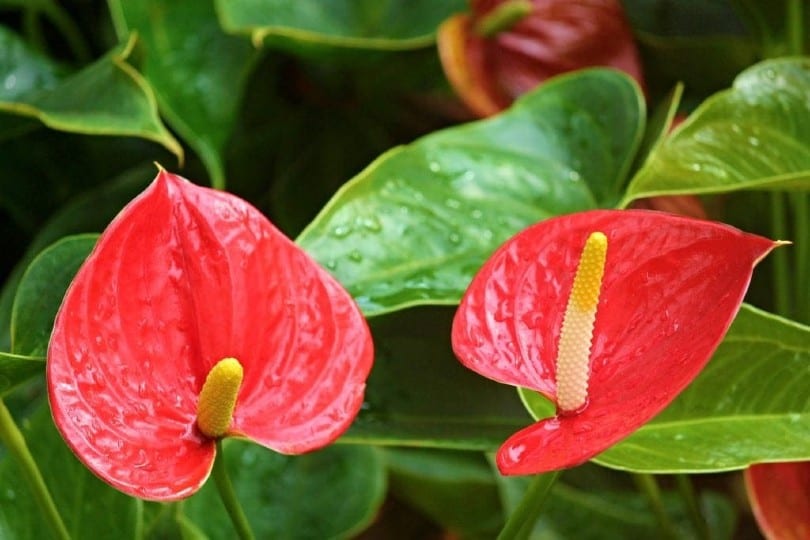Some cats love chewing on plants, which is not great for your beloved indoor plants! However, it’s important to know the difference between something being chewed on and just being annoying versus something that can harm your cat. With plants, it can be tough to pinpoint which types make the list.
The anthurium species, for example, are quite poisonous to cats. Continue reading to learn what they are and what to do if your cat eats one.
What are anthurium plants?
Anthurium is a type of plant that has a tropical look, with long stems and dark green leathery leaves that branch out in multiples. They are also characterized by their heart-shaped, flat flowers that come in green, yellow, or white with central spikes shooting upwards. They are sometimes called flamingo lilies, tail flowers, or pigtail plants. They are also commonly known as Flamingo lilies, Tail flowers, Oilcloth flowers, and Pigtail Plants.
Why is it toxic to cats?
The entirety of the plant is toxic to cats, so any nibble from the stem to the spike can be dangerous if consumed. There are calcium oxalate crystals in the plant that cause a negative reaction in your cats. These crystals are sharp, resulting in oral and throat irritation that causes swelling in your cat.
What are the symptoms?
You will notice that your cat will experience a reaction in its mouth, causing the lips and tongue to swell. They might start drooling or even throwing up to expel the toxins from their mouth. Keep an eye out for them acting out in pain by low meowing or being more docile. In severe cases, cats might have issues breathing from swelling traveling down the mouth to the throat.
It won’t always warrant an emergency trip to the vet or be a cause for severe panic. Sometimes, cats will only bite a small amount and be put off by the texture. In the best-case scenario, they spit it out and move on with their day.

What to do if they eat anthurium?
As mentioned previously, keep an eye out for how much they ate and their behaviors afterward. If you notice a big change in their behavior, trouble breathing, excessive drooling, or panic-type behavior, then reach out to your veterinarian. You may need to take them in for a check-up, and it’s a good idea to take a sample of the plant so your vet knows exactly what your cat has ingested.
Alternatives to anthuriums
There are many cat-safe plants available that you can keep around without worrying about harming your pets. A quick search will tell you before you purchase a new one if you should steer clear or not. Some cat-safe plants include:
- Spider plant
- Ponytail palm
- African violet
- Bird’s nest fern
- Gloxinia
- Venus flytrap
- Boston fern
While these plants are non-toxic to cats if ingested, they can still cause digestive upset, so it’s best to keep them out of reach of your felines as much as possible.
Final Thoughts
It’s best practice to stick with plants in your home you know your cat won’t have a negative reaction to, and if you must, keep those potentially harmful plants outside or high enough away that your cat could never reach them!
Featured Image Credit: Pixabay














